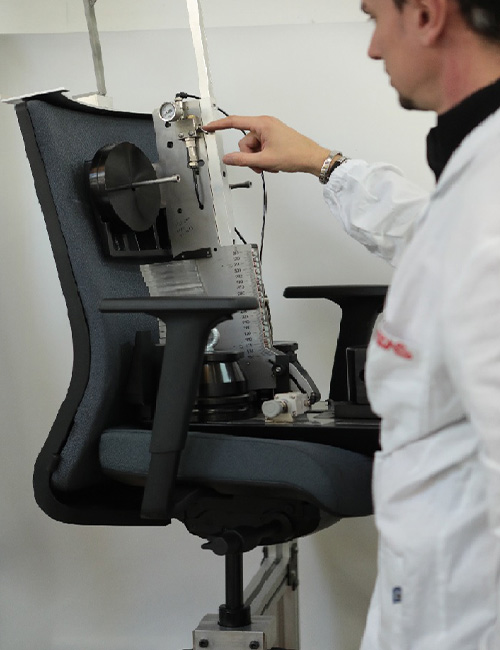Office chairs for Australian workplaces should comply with the Australian Standard (AS/NZS 4438:1997). Somewhat later than 1997, an international ISO standard was published in 2017 that investigates the dimensions of office chairs and could be a precursor to any future revised Australian Standard.
Australian Standard 4438:1997 (Ergonomic Principles and checklists for the selection of office furniture and equipment) is a guideline that speaks about posture; lumbar supports; arm rests and other ‘suggestions’ relating to office chairs and contains limited requirements, although the FURNTECH laboratory in Tasmania can perform a series of tests relating to ergonomics and stability. Will this change? Well, it could as Australia typically adopts standards from Europe, the USA and other countries where significant advances have been made. For example, our wood working machine guarding standards were developed from the British Standards that were in turn based on the German Standards. We got there eventually.
The recent international standard ISO 24496:2017 specifies methods for the determination of the dimensions of office chairs. It does not contain dimensional specifications or requirements. Tests are therefore necessary to determine the appropriate dimensions of office chairs for users with very different physical characteristics. It is likely that if Australia adopts similar standards, testing for physical characteristics will also be required, and this might be done at FURNTECH or other testing facilities.
This standard completely changes the way of measuring the dimensions of office chairs, introducing totally innovative equipment; the ‘Chair Measuring Device’ or simply CMD. The CMD is a sort of mannequin thanks to which it is possible to apply the correct weight in the right positions, simulating the encumbrance and the pressure profile of the seated person. At the same time, it allows detecting important information by the measuring instruments integrated in the dummy. Once the way of measuring was found, the correct positioning of the CMD on the chair under test was solved by Catas technicians, who designed and built special equipment that became an integral part of the same standard for the correct execution of the tests. Catas is the most important European laboratory in the wood-furniture sector.
Five office chairs were sent to fifteen laboratories around the world, a journey of thirteen thousand kilometres to try to measure the many possible variables. The results obtained were compared with a similar study carried out in North America. It took three years to collect all the data into a study that was then accepted by ISO, the global standardization body, to improve the current measurement standards at the international level. Our image shows the CMD in action, and a look at the CATAS laboratories in San Giovanni al Natisone near Udine, which is widely regarded as the chair capital of the World.

